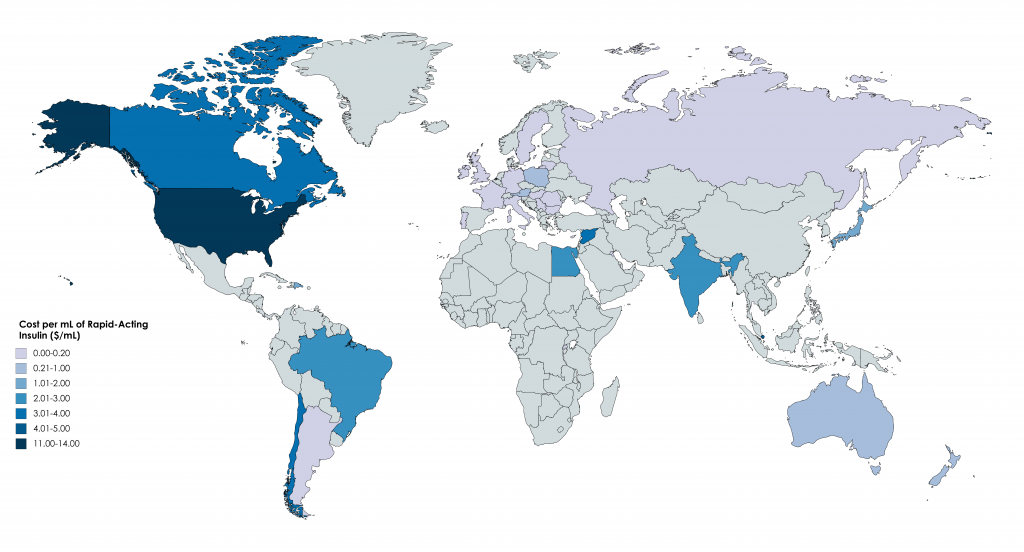By: Karson Saunders

Data: T1-International.
Insulin is a hormone that exists within the human body that helps to regulate blood-sugar levels. For those with Type 1 Diabetes and more severe cases of Type 2, their bodies fail to create this hormone and they must rely on insulin therapy to manage their blood glucose levels. Without insulin, the human body is unable to breakdown glucose and utilize it as the fuel needed to function and survive.
When Sir Frederick Grant Banting and John James Rickard Macleod discovered in 1921, they sold the patent for a single dollar to demonstrate their desire for easy and equal access. A 1000% increase in the cost of insulin has occurred in the United States, causing vials of insulin that were sold for $20 to now cost around $300 dollars when they cost below $8 to manufacture (Diabetes Voice).
Due to the fact that the FDA categorizes insulin as a “chemical drug” rather than a “biological drug”, allowing for prices and manufacturing to be intensely controlled. The cost of insulin is immensely higher for those living in the United States (as shown on the above map). On average, for those without access to insurance coverage, the monthly cost of insulin alone (excluding all other supplies needed to administer the drug and manage diabetes) is around $1000. While there are cheaper options available, they lack comparable effectiveness (Prasad 2019). This map shows a world in which profits that can be made off of a life saving drug are being valued over the well-being of the 415 million individuals living with this disease.
So why is insulin so expensive? What can be done to achieve #insulin4all?
With 3 companies (Eli Lilly, Novo Nordisk, and Sanofi) controlling the global insulin market, domestic companies that can provide insulin at an affordable price stand no chance. Lawsuits and grey-areas in United States’ patent law allows for “evergreening,” a process by which businesses extend the lifetime of patents that are about to expire by either getting a new one or by buying loyalties to keep their high earning patent running (T1International). Pharma marketing schemes also play a role in preventing physicians from selling and recommending cheaper options of insulin. Physicians are legally allowed to collect payments directly from pharmaceutical companies in return for their time. All too often this produces physician loyalty to certain companies ,which results in physicians prescribing only certain brand name medications (T1International).
In order to combat these issues diabetics face, we must push for greater transparency of the pharmaceuticals and improved policies that work to lower prices, close the loopholes in patent systems, and prioritize the value of organizations that work for the well-being of individuals without funding from dominating global companies. By speaking out against these injustices being faced by 415 million individuals, great strides can be made to secure #insulin4all.
Sources:
https://www.bbc.com/news/world-us-canada-47491964
https://diabetesvoice.org/en/news/priced-out-the-impact-of-rising-insulin-costs/
https://www.t1international.com/access-survey16/
https://www.t1international.com/blog/2019/01/20/why-insulin-so-expensive/
The inspiration behind this piece:
Following our class tour of the SUM exhibit in the Wellin Museum at Hamilton College, the piece that left me thinking most was Kill the Indian, Save the Man by RYAN! Elizabeth Feddersen. The simplicity of the image of a map to convey the harsh and obscured reality of the mass number of Indian Boarding schools that were establish to strip away the Native American culture.